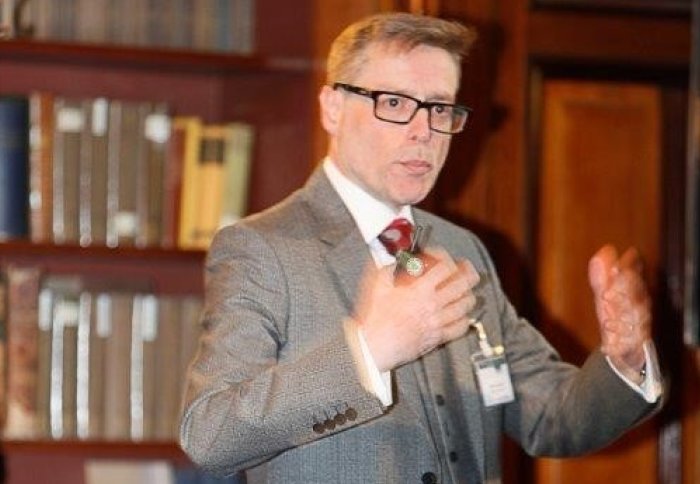Imperial professor appointed Research Chair in Data-Centric Engineering

Professor Mark Girolami will study how engineering can use big data to improve practice, including the development of ‘digital twins’.
Professor Girolami, from the Department of Mathematics at Imperial, has been appointed the Lloyd’s Register Foundation / Royal Academy of Engineering Research Chair in Data-Centric Engineering.
We are now able to measure the ‘heartbeat’ of large-scale, complex systems – such as oil processing plants, gas turbines or the infrastructure systems of entire cities. Professor Mark Girolami
He will lead a five-year project to explore how big data can be incorporated into engineering practice, including the development of new data-centric techniques to monitor the safety of physical structures that will be trialled on the world’s first 3D printed stainless steel pedestrian bridge.
As part of this, Professor Girolami will develop novel methods and software to create virtual copies of physical structures, also known as digital twins, in order to model what might happen in real life.
He is currently Chair of Statistics at Imperial and Strategic Programme Director for the Turing-Lloyd’s Register Foundation Data-Centric Engineering Programme at The Alan Turing Institute.
Engineering 'heartbeats'
Professor Girolami said: “We are now able to measure the ‘heartbeat’ of large-scale, complex systems – such as oil processing plants, gas turbines or the infrastructure systems of entire cities. This offers huge opportunities for engineers, ensuring that systems are resilient to damage, efficient and economical to run. Yet with these opportunities come immense challenges around how we actually use this data rigorously and systematically.”
The new methodology will be used to collect data from the development, construction, deployment and operation of the world’s first 3D printed stainless steel pedestrian bridge. The 12m long bridge, which is printed by MX3D and due to be installed in Amsterdam in late 2018, will use a network of sensors to continually monitor its structural health and feed this data into a living computer model.

The digital twin will imitate the physical bridge with growing accuracy and enable engineers to predict how the structure will change over time to ensure it remains safe for pedestrian use.
Professor Girolami said: “As the properties of 3D-printed stainless steel at this scale are largely unknown, we are essentially working with a new material. This presents us with a challenge - how do you monitor the structural integrity, and create a digital twin, of such a safety critical device without knowing how the material will perform over time? Using a data-centric approach to engineering can help address this and will have enormous implications for society and industry.”
Complex and interconnected world
The data collected will also provide valuable insights to inform designs for future 3D-printed metallic structures.
The ability to collect data at unprecedented levels is transforming every stage of engineering, from design to manufacturing, operation to deployment, and maintenance to decommissioning.
Professor Girolami’s research will establish a new area of engineering science, developing theory, methods and applications for data-centric engineering. This emerging field will bring together engineers, mathematicians, statisticians and computer scientists.
Professor Richard Clegg FREngFREng, Foundation Chief Executive of the Lloyd’s Register Foundation, said: “We are living in a complex and interconnected world where bridging big data and engineering is of growing importance.
"The Royal Academy of Engineering Chair, alongside the £10m funding that the Lloyd’s Register Foundation has already committed to growing this new area of data-centric engineering, will help in working together to assure the safety of critical engineering-related infrastructure for the benefit of society”.
Article text (excluding photos or graphics) © Imperial College London.
Photos and graphics subject to third party copyright used with permission or © Imperial College London.
Reporter
Hayley Dunning
Communications Division